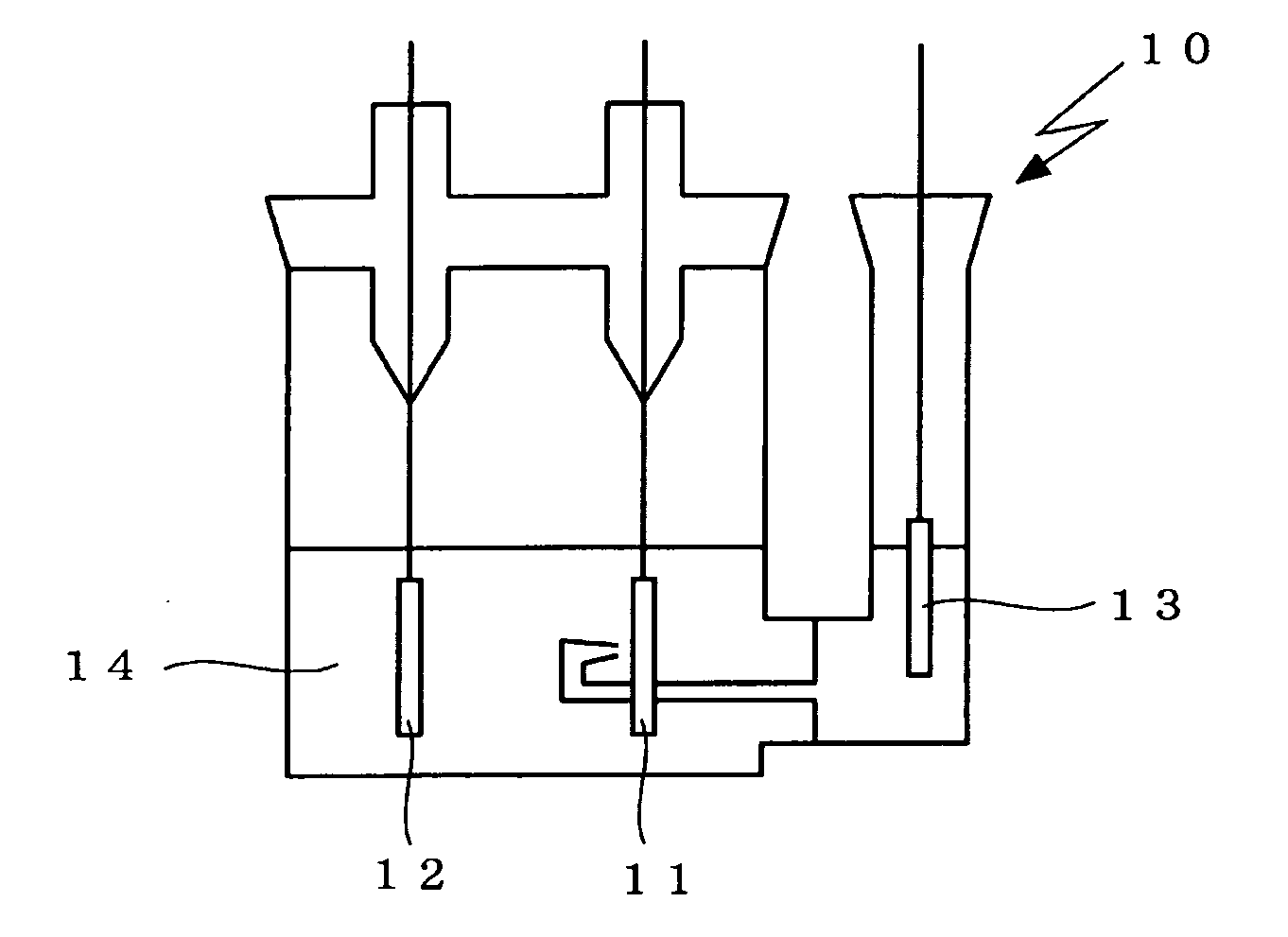Non-aqueous electrolyte secondary battery
a secondary battery and non-aqueous electrolyte technology, applied in the direction of cell components, electric vehicles, transportation and packaging, etc., can solve the problems of high manufacturing cost, unstable supply, and high production cost, and achieve the effect of improving the capacity of the positive electrode active material to accept lithium ions at the end of discharge, preventing the resistance of the positive electrode active material from abruptly reducing the resistan
- Summary
- Abstract
- Description
- Claims
- Application Information
AI Technical Summary
Benefits of technology
Problems solved by technology
Method used
Image
Examples
example 1
[0036]In Example 1, a positive electrode was prepared using LiNi0.80Co0.15Al0.05O2 as the lithium-containing metal oxide containing cobalt and represented by the foregoing general formula. The LiNi0.80Co0.15Al0.05O2 was prepared by mixing Li2CO3 and a hydroxide of Ni0.80Co0.15Al0.05 together and sintering the mixture in air at 900° C.
[0037]FePO4 belonging to the space group Pnma, which was obtained by delithiation from LiFePO4, was used as the LibFePO4.
[0038]The just-described LiNi0.80Co0.15Al0.05O2 and FePO4 were mixed together at a weight ratio of 95:5, and the resultant mixture was used as the positive electrode active material. The positive electrode active material, a carbon material as a conductive agent, and polyvinylidene fluoride as a binder agent were dissolved in a N-methyl-2-pyrrolidone solution so that the positive electrode active material, the conductive agent, and the binder agent were in a weight ratio of 90:5:5, and the resultant was kneaded to prepare a positive e...
example 2
[0040]In Example 2, a positive electrode was prepared in the same manner described as in Example 1 above, except that the positive electrode active material used was a mixture of the same LiNi0.80Co0.15Al0.05O2 and FePO4 as used in Example 1 above in a weight ratio of 90:10. Using the prepared positive electrode, a three-electrode test cell was prepared in the same manner as described in Example 1 above.
example 3
[0043]In Example 3, Li1.01Ni0.40Co0.30Mn0.30O2 was used as the lithium-containing metal oxide represented by the foregoing general formula and containing cobalt, and the Li1.01Ni0.40Co0.30Mn0.30O2 and FePO4 were mixed in a weight ratio of 90:10 to prepare a positive electrode active material. Except for using the positive electrode active material thus prepared, a positive electrode and a three-electrode test cell were prepared in the same manner as described in Example 1 above.
PUM
| Property | Measurement | Unit |
|---|---|---|
| voltage | aaaaa | aaaaa |
| discharge current density | aaaaa | aaaaa |
| discharge current densities | aaaaa | aaaaa |
Abstract
Description
Claims
Application Information
 Login to View More
Login to View More - R&D
- Intellectual Property
- Life Sciences
- Materials
- Tech Scout
- Unparalleled Data Quality
- Higher Quality Content
- 60% Fewer Hallucinations
Browse by: Latest US Patents, China's latest patents, Technical Efficacy Thesaurus, Application Domain, Technology Topic, Popular Technical Reports.
© 2025 PatSnap. All rights reserved.Legal|Privacy policy|Modern Slavery Act Transparency Statement|Sitemap|About US| Contact US: help@patsnap.com


